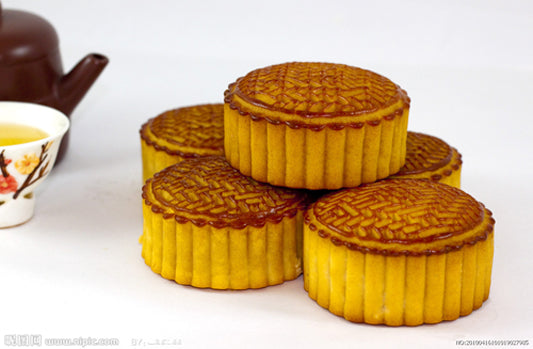How Mooncakes Brought Down An Empire
[caption id="attachment_1246" align="aligncenter" width="533"] Mooncakes for Mid-Autumn Festival[/caption] Eat a mooncake and become a secret revolutionary! Mid-Autumn Festival (zhōng qiu jié, 中秋節) is just around the corner, and mooncakes (yuè bing, 月餅) are a must-have for the celebration. The legend behind mooncakes is an interesting tale. Supposedly, during the Yuan Dynasty (1271-1368), Zhu Yuanzhang (朱元璋), a leader of the Han army, and his advisor Liu Bowen (劉伯溫), devised a plan to overthrow the ruling Mongol government. In order to covertly recruit the Han people for the rebellion, soldiers spread a rumor that the only way to protect themselves from a deadly disease come winter was to eat a mooncake—something Mongols didn't consume. Cleverly hidden inside each mooncake was a paper message about the revolt that would occur during the Mid-Autumn Festival. This secret plot successfully led to the Mongol government being overthrown. Since then, mooncakes have been an integral part of the festival. Typically, mooncakes are round or square, measuring at four inches in diameter and two inches thick. A thin, soft and artfully decorated crust covers a sweet, rich filling, varying in flavors from lotus seed paste (lían róng, 莲蓉), sweet bean paste (dòu shā,豆沙) to five kernel (wǔ rén ,五仁), often with one or more salted duck egg yolks in the center. Many bakeries have also created modern flavors, including fruit, vegetable, green tea and ice cream fillings. There are even unique mooncakes distinctive to regions across China that are just as well-known and tasty. --Lauren Chen
Mooncakes for Mid-Autumn Festival[/caption] Eat a mooncake and become a secret revolutionary! Mid-Autumn Festival (zhōng qiu jié, 中秋節) is just around the corner, and mooncakes (yuè bing, 月餅) are a must-have for the celebration. The legend behind mooncakes is an interesting tale. Supposedly, during the Yuan Dynasty (1271-1368), Zhu Yuanzhang (朱元璋), a leader of the Han army, and his advisor Liu Bowen (劉伯溫), devised a plan to overthrow the ruling Mongol government. In order to covertly recruit the Han people for the rebellion, soldiers spread a rumor that the only way to protect themselves from a deadly disease come winter was to eat a mooncake—something Mongols didn't consume. Cleverly hidden inside each mooncake was a paper message about the revolt that would occur during the Mid-Autumn Festival. This secret plot successfully led to the Mongol government being overthrown. Since then, mooncakes have been an integral part of the festival. Typically, mooncakes are round or square, measuring at four inches in diameter and two inches thick. A thin, soft and artfully decorated crust covers a sweet, rich filling, varying in flavors from lotus seed paste (lían róng, 莲蓉), sweet bean paste (dòu shā,豆沙) to five kernel (wǔ rén ,五仁), often with one or more salted duck egg yolks in the center. Many bakeries have also created modern flavors, including fruit, vegetable, green tea and ice cream fillings. There are even unique mooncakes distinctive to regions across China that are just as well-known and tasty. --Lauren Chen
Want your child to speak and use Chinese based on state-adopted curriculum? Better Chinese Plus is the home version of our state-adopted program with video and personalized instructions. The learning pathway provides a clear alignment with the ACTFL proficiency standards. Each lesson is powered by patented technologies to help your child more effectively learn characters, vocabulary, and expressions. Each video lesson is moderated by at least 2 teachers with different styles. Each lesson practice is individualized by AI to ensure acquisition of language skills. Our program leverages technologies to provide the most effective hybrid solutions for your child. You can add physical books to remind them what they are learning as well as empowering them with what they know. Connect with a BC+ Sherpa to further help your child through structured guidance. Sign-up for 14 days for free. Learn, retain, and enjoy learning Chinese anytime!

0 comments